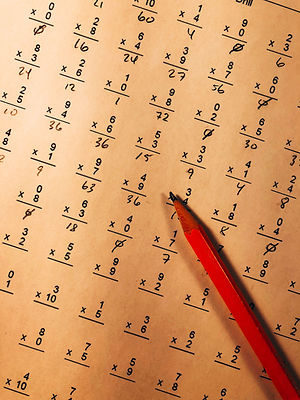
MathBait™ Multiplication
The Story of Eratosthenes
Share this resource!
In this fun tongue-and-cheek story, we introduce Eratosthenes and his idea to create a sieve to help him identify prime numbers. This is a great way to introduce the idea of a sieve.
Details
Resource Type
Activity
Primary Topic
Primes & Factoring
Unit
7
Activity
14
of
22
This is a visual activity that introduces students to the Sieve of Eratosthenes. A sieve is a systematic way of eliminating numbers. In our case, we want to eliminate any number that cannot be prime. Begin by asking students for ideas on how we could quickly and easily identify all the prime numbers up to 100.
You might be surprised when a few good ideas pop up! If students need a boost, remind them a prime number is not a multiple of any other number except itself and 1. For instance, 11 is prime because we cannot get to 11 by skip counting by anything but 1's or if we are skip counting by 11's. Hopefully students notice this means any number we say when skip counting cannot be prime. For instance, if skip counting by twos, all the numbers said after 2 can be built from twos, and thus are not prime. If students do not immediately recognize this, it is okay.
Explain to students that a mathematician named Eratosthenes created a way to find all the prime numbers using skip counting! First, he got out his multiplication chart and started with 2's. He knew 2 was a prime number. Ask students how we know if 2 is prime. (Eratosthenes knew because he could only organize 2 M&M's into a single pile with both candies or two piles each with one chocolate meaning 2 could only be written as 2×1.)

Any number that was bigger than 2 and a multiple of 2 couldn't be prime because it could be built with 2's. So Eratosthenes started skip counting, crossing off all the multiples of 2, but leaving 2 untouched. Next, he moved on to threes. Again, three is prime so he left it alone, but he crossed off every multiple of 3 on his board. When he got to 4, he realized he already had crossed out all the multiples of 4! Ask students why this is. (Because 4 is made of 2's, every multiple of 4 is also a multiple of 2). Eventually he didn't have any more multiples to cross out and guess what was left? Almost every number on his multiplication table that wasn't crossed out was prime. Tell students there was one number left that wasn't prime - can they guess what it is?
Move directly into the next activity, The Sieve, which will give students a refresher on primes before showing them the beautiful Sieve in action.
The material on this page is copyrighted by MathBait™. Please use and enjoy it! MathBait™ provides a temporary license for Non-Commercial purposes. You are not permitted to copy, distribute, sell, or make derivative work without written permission from MathBait™.
Tell us what you think!
Click to rate this activity

